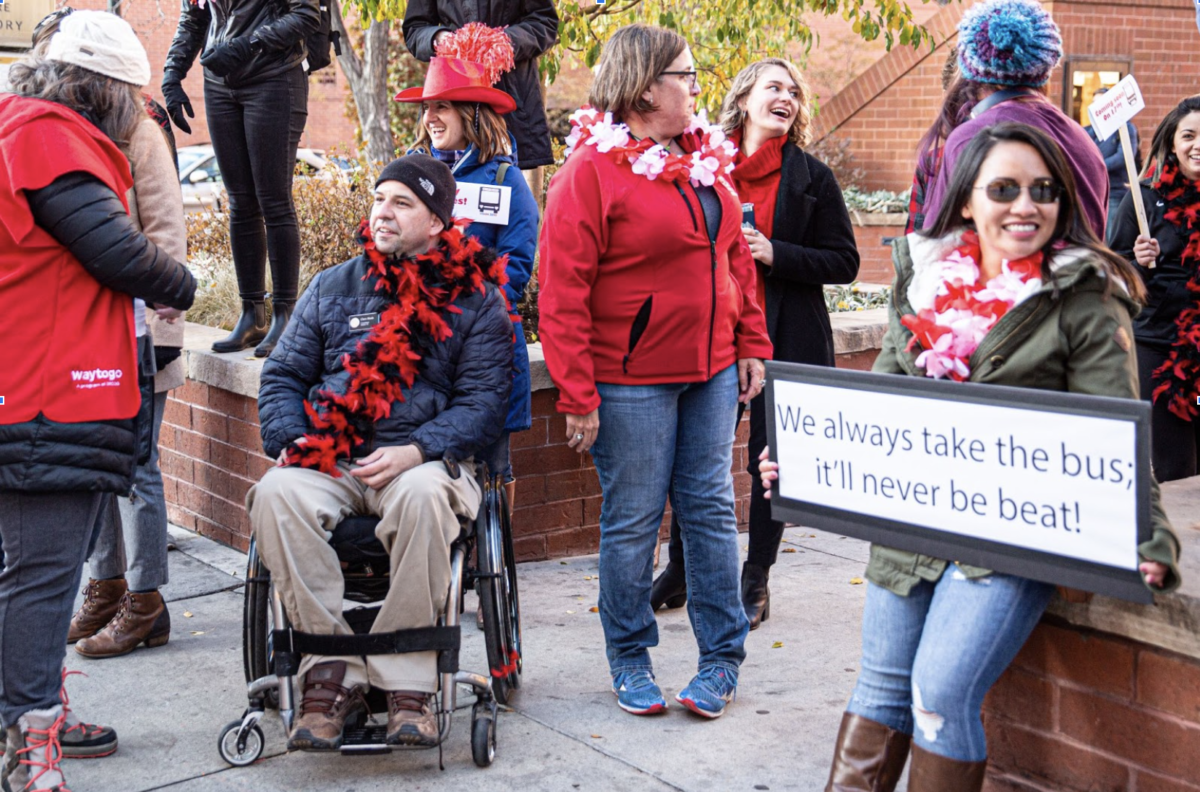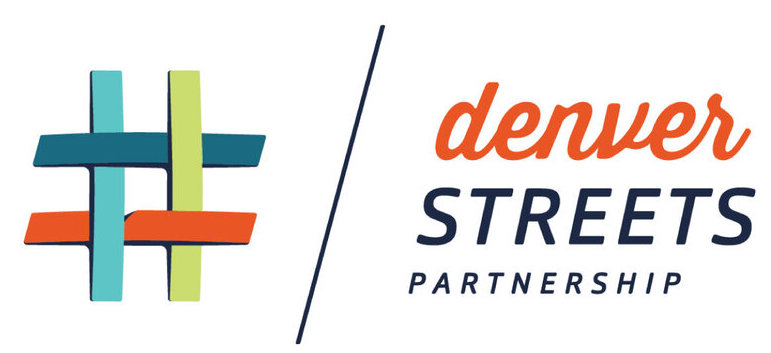
More than 70 percent of Denver’s residents can walk to public transit—usually a bus stop. But on the Colorado capital’s worst traffic days, you might get where you’re going faster by walking. Sound improbable? Denver Streets Partnership has illustrated this reality with its Pokey Awards, a lighthearted event with a pointed message: In a race among six transportation modes across downtown, including walking and rolling in an electric wheelchair, the bus came in dead last.
Soon after that race in 2019, Denver introduced a bus-only lane on one of its main downtown arteries—the second street to be improved that year—and more are on the way. Denver’s Regional Transportation District (RTD) estimates dedicated bus lanes could cut travel time through downtown by as much as 42 percent during rush hour.
Highlighting the need for those lanes is just one of the ways Energy Foundation grantee Denver Streets Partnership advocates for people-friendly streets that support transit, walking, rolling (e.g., in an electric wheelchair), and biking in the city. The partnership, part of the American Cities Climate Challenge, is a diverse coalition of nine community organizations and dozens of additional partners in the public and private sector. All are actively engaged in changing the city’s streets so they are safe for everyone, no matter what mode of transportation they choose.
Tackling transportation pollution
Transportation is set to overtake the power sector as Colorado’s largest source of greenhouse gas emissions, according to the state’s most recent greenhouse gas inventory. Colorado must cut climate pollution in the transportation sector 40 percent by 2030 to meet the state’s climate goals.
The Denver Streets Partnership’s advocacy focuses on two actions: allocating more street space for sustainable transport options and properly funding those options. In addition to activities like the Pokey Awards, they’ve organized other events aimed at raising citizen awareness, such as a transit flash mob (pre-COVID-19), where people came out to celebrate the new bus lanes.
In addition to promoting community participation, Denver Streets Partnership is an important conduit of information for city council members and other decision-makers. The group is active from the neighborhood level up through Denver County, RTD, the state, and the federal government, pushing for more bus funding—including for a Bus Rapid Transit system that could connect areas beyond downtown.
“It’s always tempting to focus on the sexier train projects,” said Jill Locantore, Executive Director. “But those tend to be way more expensive and will not generate nearly the amount of ridership, depending on where they’re going.”
Boosting equity and safety
The argument for reliable public transit goes beyond the emissions reductions from taking cars off the road. Locantore pointed to research from the foundation TransitCenter showing that a 40 percent increase in transit service in cities including Denver, Atlanta, and Cleveland would dramatically boost access to jobs.
She also noted that one of Denver’s busiest thoroughfares, Federal Boulevard, spans 8 to 10 lanes in some places, making it inherently unsafe for anyone who is not in a car. More than a fifth of the city’s pedestrian-involved crashes between 2012 and 2017 took place there.
“The only way you can make corridors like that more safe is narrowing the roadway, which means moving large volumes of people more efficiently—which means transit,” she said.
The Denver Streets Partnership not only is amplifying local voices to show the broad community support for transit improvements, but also providing communities with the tools to be able to understand how to articulate new visions and advocate for themselves.
For example, it has been hard for anyone in the Vietnamese community near Federal Boulevard to speak out on traffic issues because of the language barrier. The partnership now has a grassroots organizer focused on the community who speaks fluent Vietnamese and is helping to build a business improvement district to engage residents and businesses.
There are other encouraging trends. The city is in the planning phase for a bus rapid transit system on Colfax Avenue, another main artery, which would more than double bus ridership by 2035.
“The city’s moving in the right direction, in that they’re taking these tiny micro steps right now,” Locantore said. “In order to really achieve our climate change goals and our equity goals, we have to significantly accelerate the pace of building out a more robust bus network.”


